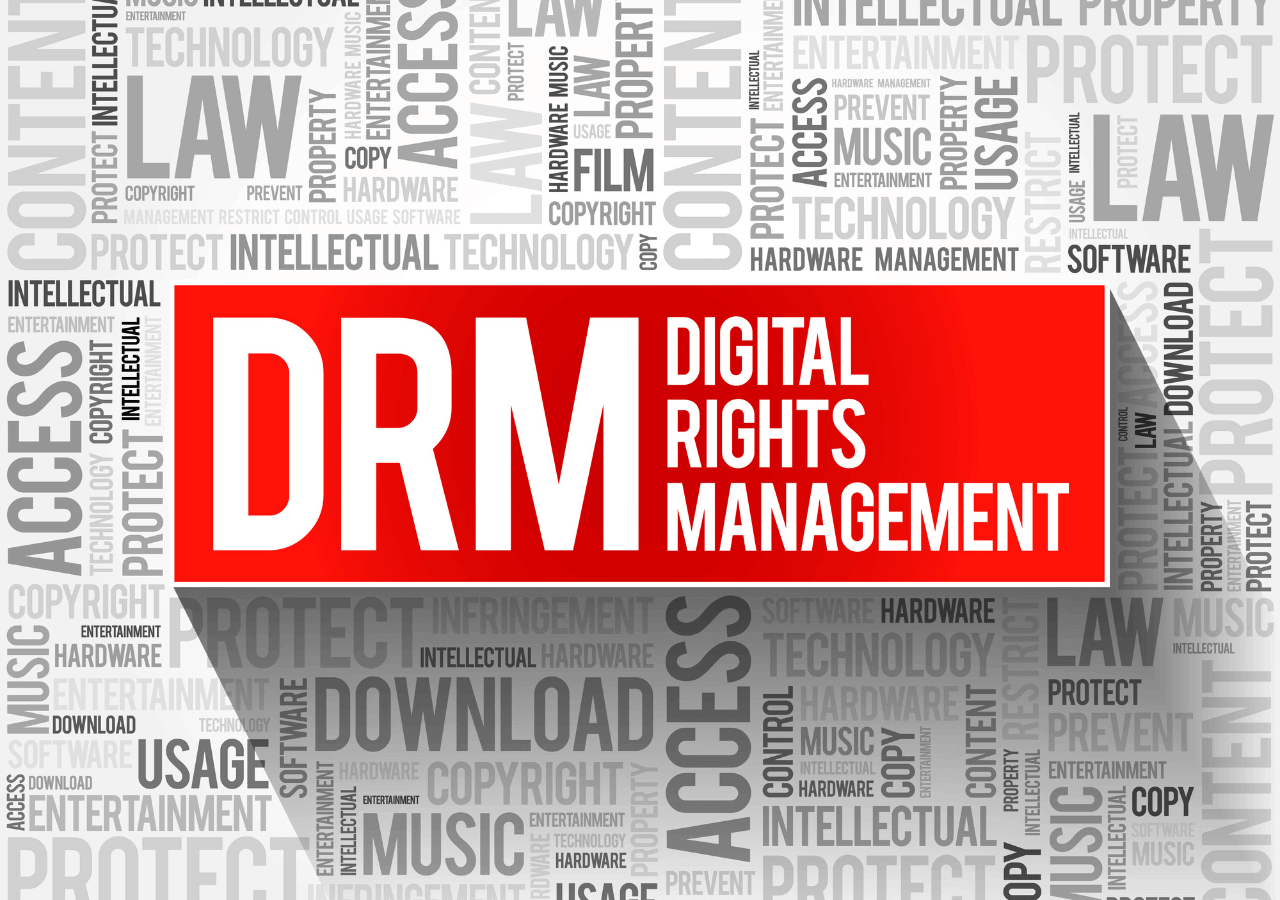- About
- Discover EaseUS
- Reviews & Awards
- License Agreement
- Privacy Policy
- Student Discount
If you have ever tried to download or screen record protected videos from popular streaming services, like Netflix, Hulu, etc., you might meet the phrase "DRM-protected content". It is one of the greatest ways to protect publisher's and creators' digital IPs, as there are millions of other cases of illegal use and content theft on the internet daily. In this post, you will have an insight into DRM protection, including what it is, how it works, and many more. Without further ado, let's get started now!
What Is DRM Protected Content
First of all, let's learn the DRM. DRM, shortened for Digital Rights Management, is a technology that limits access to copyrighted media files to protect digital copyright. The copyrighted media files include but are not limited to music, movies, shows, books, games, and many others. So, it is usually used to prevent unauthorized access, copying, use, and distribution of copyrighted digital files and information, and only specific devices or users that meet certain criteria can access them.

For instance, some DRM-protected media files, like movies, can only be played on a specific application or in a limited number of times. Others, like DRM-protected books or PDF files, might ask you to enter the password for copying and reading. After having a knowledge about the DRM protection, let's see its benefits below:
🎯Obviously, it can protect your digital content from unauthorized copying, sharing, downloading, printing, etc without your permission
🔶Protect your revenue, especially your revenue depends on restricting access to content.
✨Help you set limits to your content's access on specific devices, IP addresses, and other aspects.
🎉Prevent plagiarization and piracy
There are some common DRM protection types in our daily lives, like License agreements, encryption, embed codes, watermarking, metadata, and more.
Spread out this post with others in need!
How Does DRM Protect Your Content
Generally speaking, to protect your content, the DRM protection will go through three stages:
1. First, when you upload your content, the DRM provider will encrypt the digital files, ensuring no one can use it unless he or she has the right key.
2. Next, it will create some encryption keys.
3. Finally, someone who wants to access the content must be verified with a username and password to ensure they are authorized to get the key.
Examples Of DRM Protected Content
While speaking of the DRM-protected content examples, the online streaming service is representative. These online video streaming services use the DRM to protect the media content:
Streaming video platforms: The content is streamed online through a browser or application, and every view is validated via the license server. So, in most cases, the video streamed through DRM cannot be recorded with a screen recorder or downloaded.
Video games: When you install a video game, you'll be asked to enter a unique code that you receive from the website.
And more ...
The Bottom Line
Here, you know almost everything about the DRM-protected content. If you think this post is worth reading, share it now!
Was This Page Helpful?
Jane is an experienced editor for EaseUS focused on tech blog writing. Familiar with all kinds of video editing and screen recording software on the market, she specializes in composing posts about recording and editing videos. All the topics she chooses
Related Articles
-
The Best Video Output Settings for Gaming, Streaming, and Editing
 Jean/2024-05-10
Jean/2024-05-10 -
What Is a Video Codec: Something You Need to Know
 Jean/2024-05-10
Jean/2024-05-10 -
What Is an OTT Box: Everything You Need to Know
 Jean/2024-05-10
Jean/2024-05-10 -
Top Romance Movies on Apple TV: Love Stories to Watch Now
 Jean/2024-05-10
Jean/2024-05-10